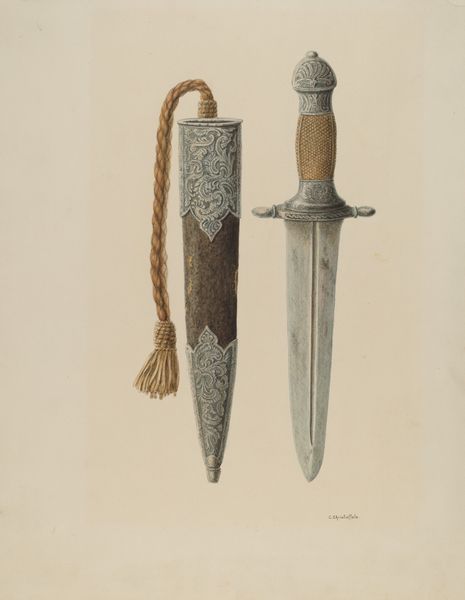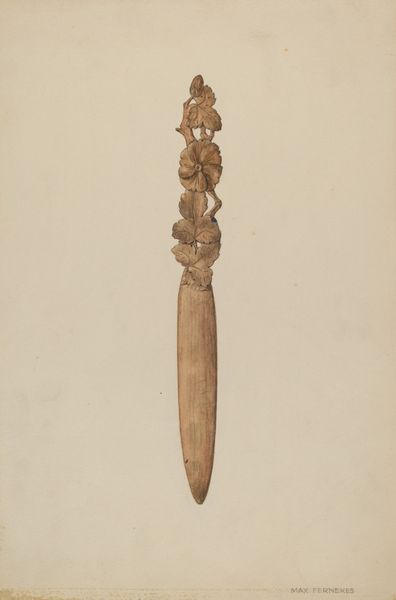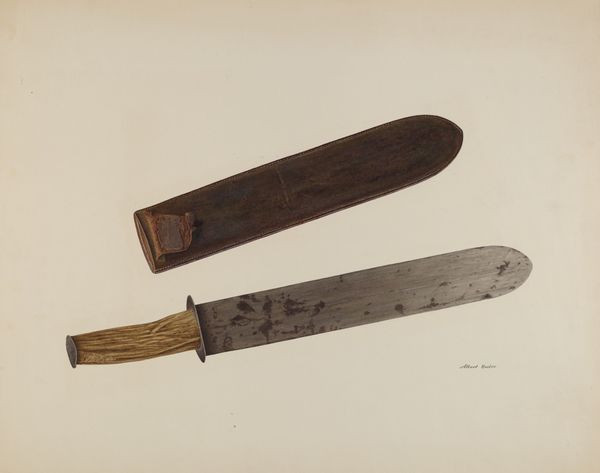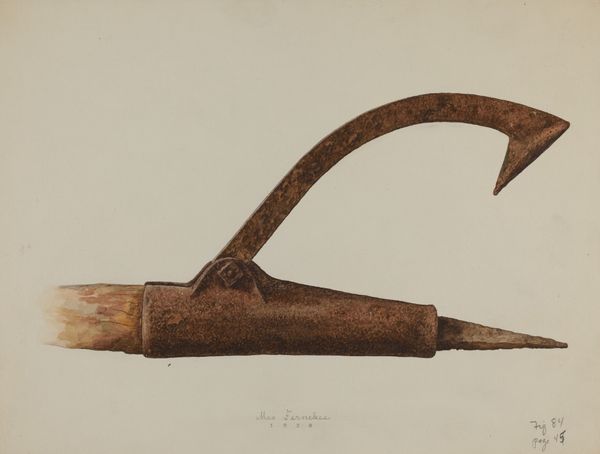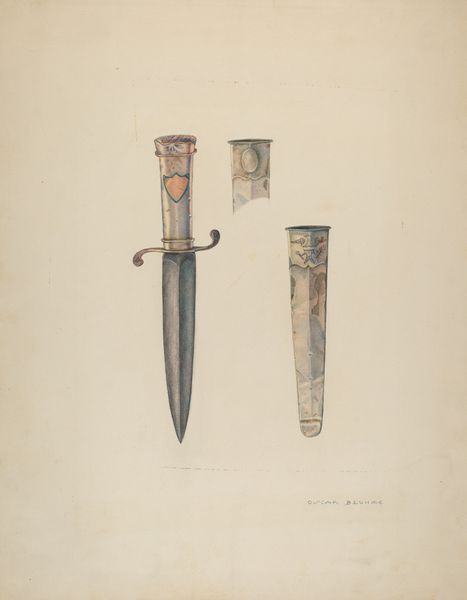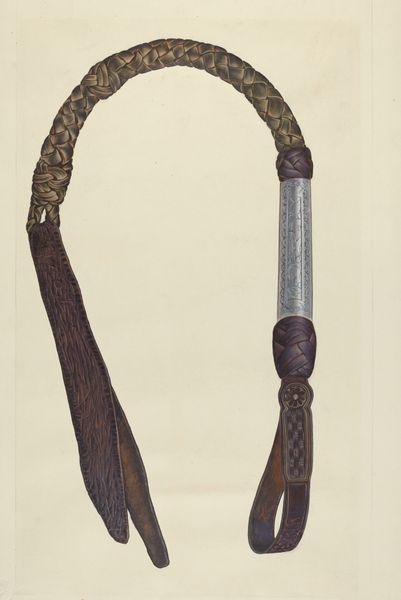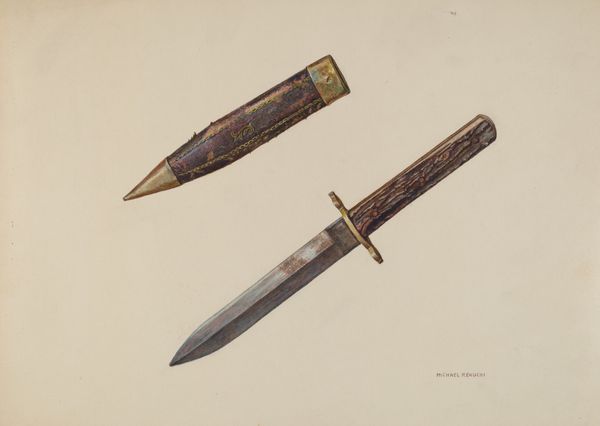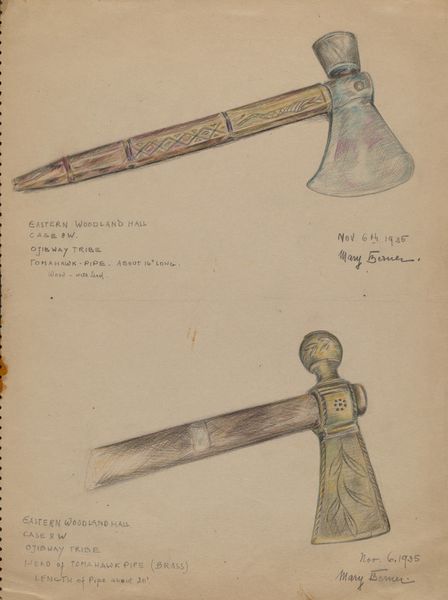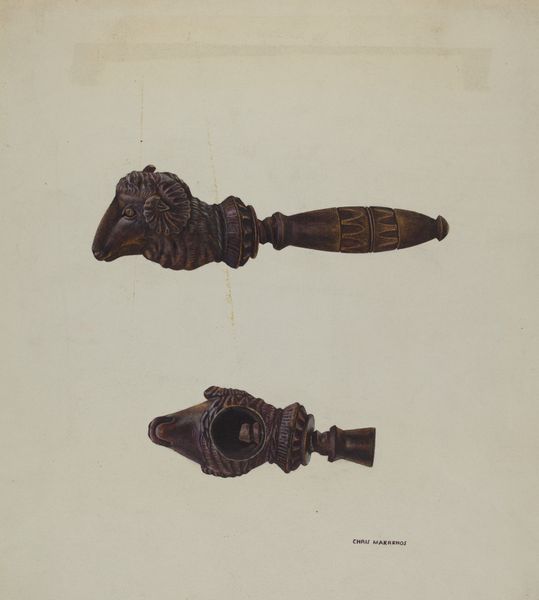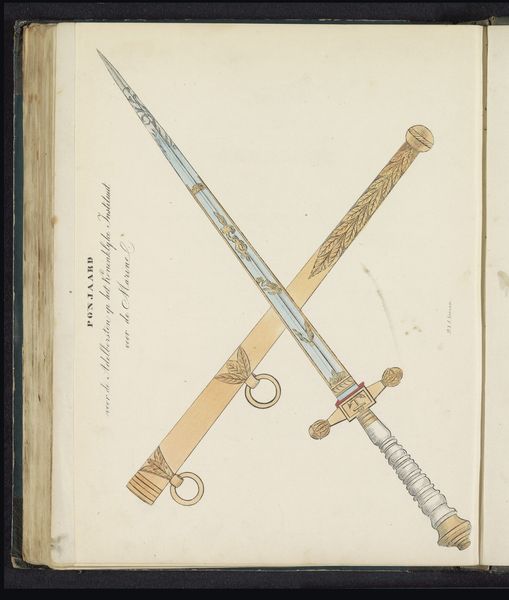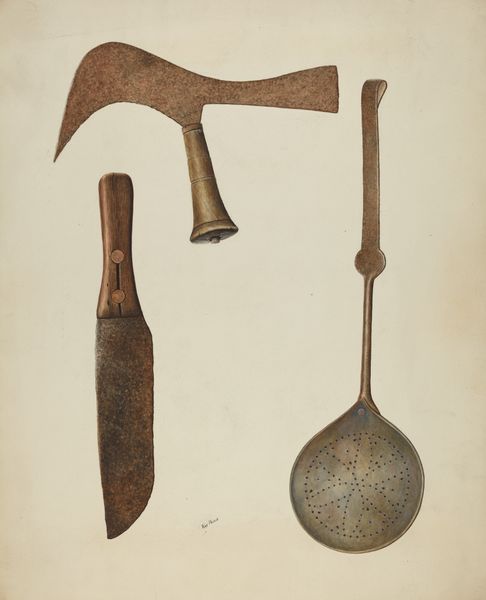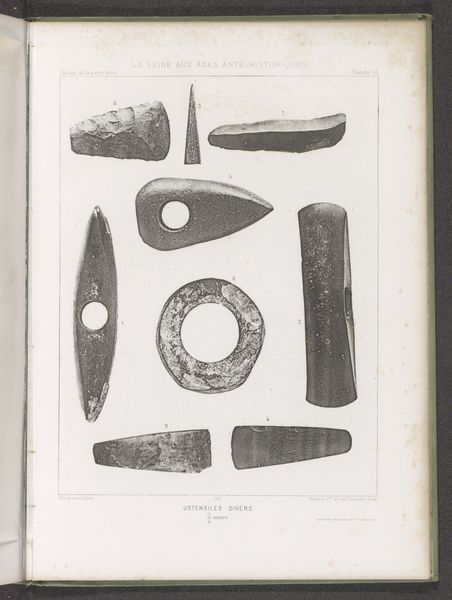
drawing
#
drawing
#
figuration
#
watercolor
Dimensions: height 660 mm, width 480 mm, height 413 mm, width 267 mm, height mm, width mm
Copyright: Rijks Museum: Open Domain
Curator: Looking at Robert Jacob Gordon's watercolor and ink drawing from possibly between 1777 and 1786, we see three meticulously rendered knives alongside their sheaths. The artwork is titled "A Tswana or Kora knife with its sheath." Editor: I’m struck by how delicate these images are, considering the probable function of the objects depicted. The intricate ornamentation, the rendering of textures in watercolor… it’s a fascinating juxtaposition. Curator: Absolutely. Gordon, a Dutch military officer and explorer, documented extensively the indigenous populations and artifacts he encountered in Southern Africa. These knives provide insight into the material culture and artistic expression of the Tswana and Kora people. They offer a window into their social structures, status symbols, and perhaps even their spiritual beliefs. Editor: Indeed. Focus on the central knife sheath—see the figure carved on its surface? There’s a geometric quality to it, almost abstract. Below, an elongated creature… It makes me wonder about the semiotic intention and artistic conventions employed. Curator: Those visual elements speak to a symbolic language inherent in the object’s creation. Each motif likely carries a specific meaning within the cultural context of its origin, reflecting social norms and cultural identity. The imagery could be tied to lineage, achievements, or even protection. Editor: I agree. However, the presentation flattens these elements, treating them as formal components—shape, line, and form creating pleasing arrangements regardless of context. Consider the negative space; its function complements the designs… There’s a graphic elegance in its simplicity, irrespective of symbolism or intention. Curator: A necessary observation, to be sure, as European conventions also color our interpretation. Colonial viewpoints inevitably impacted the framing and description, and, potentially, even the choices Gordon made in which objects to record, which contributes to how we comprehend them today. Editor: And from a formal standpoint, the slight color variations unify the series despite variations in pattern and object type; an intentional composition yielding balance and elegance. It's intriguing to observe how the image functions independently. Curator: Seeing them isolated within the page allows reflection on what’s there but also about what’s missing, the broader context that continues to challenge and inform. Editor: An exquisite reminder how much richness we discover through blending form and function!
Comments
No comments
Be the first to comment and join the conversation on the ultimate creative platform.
